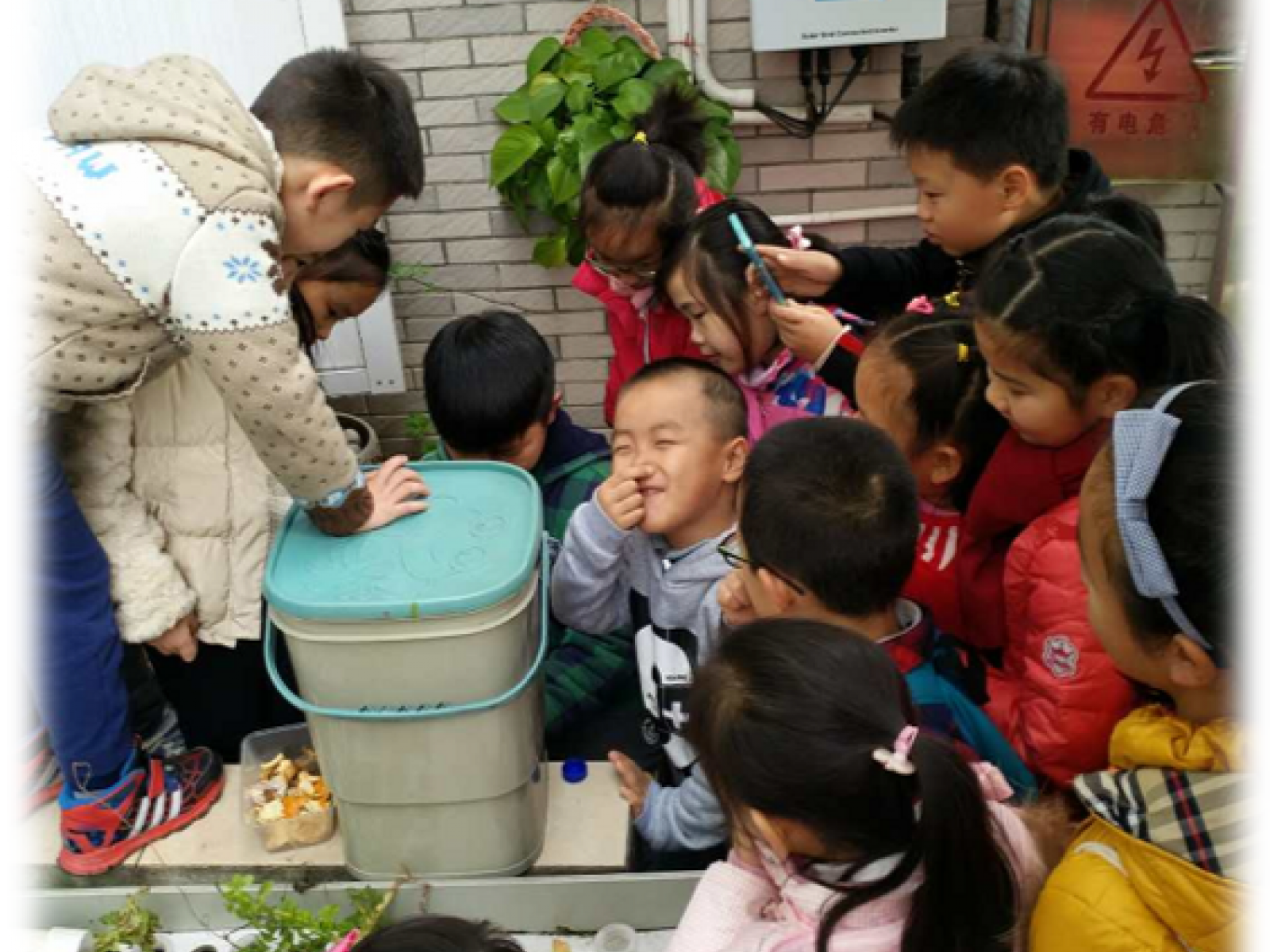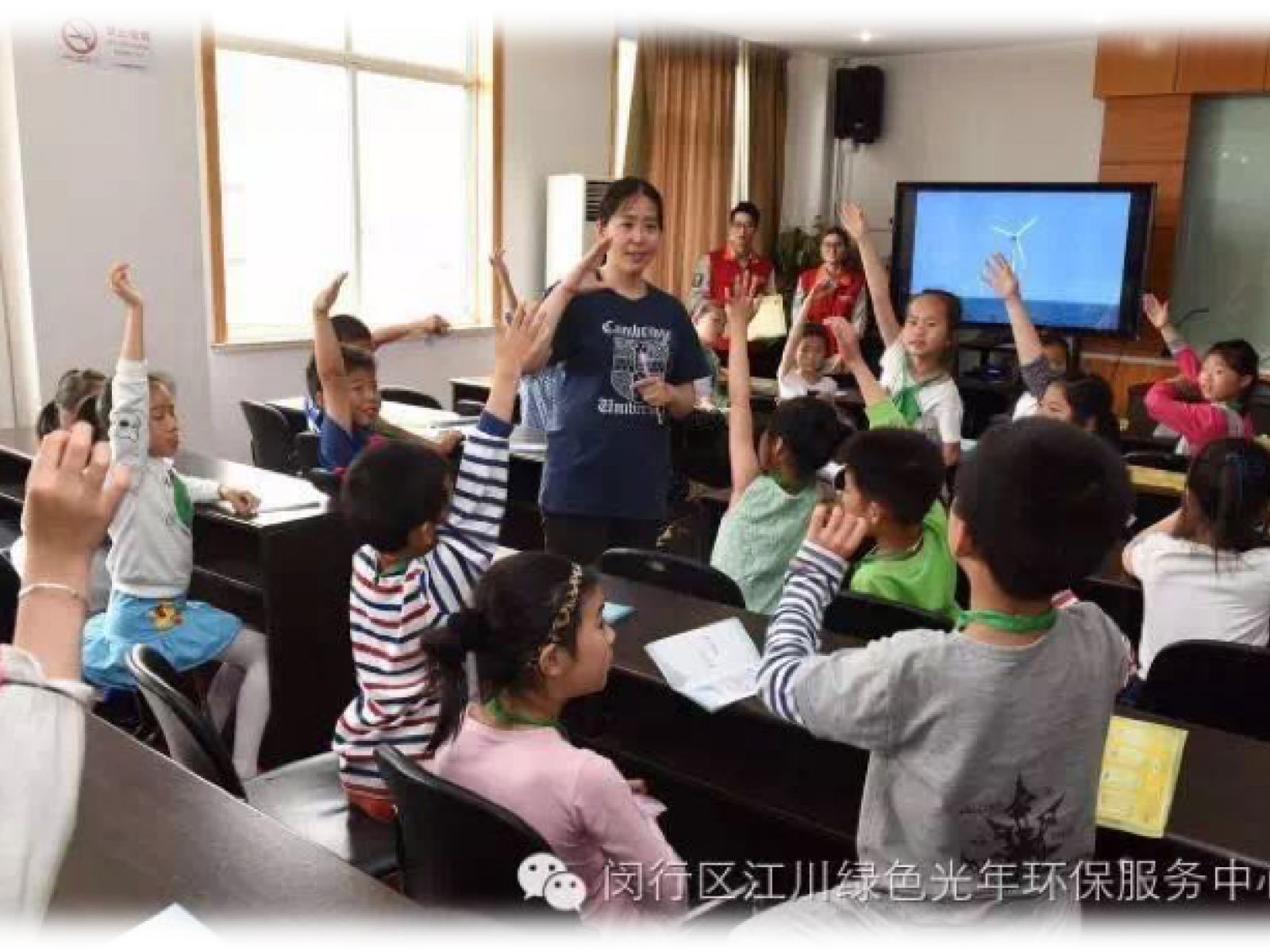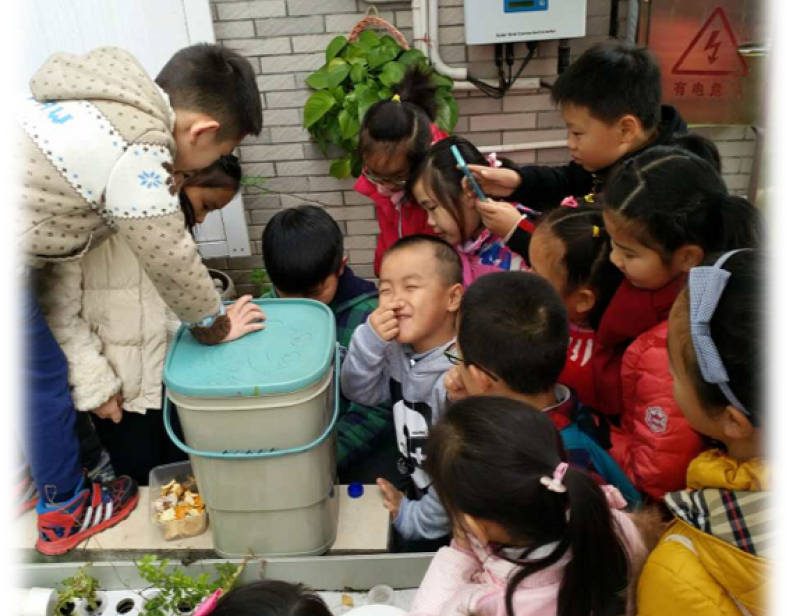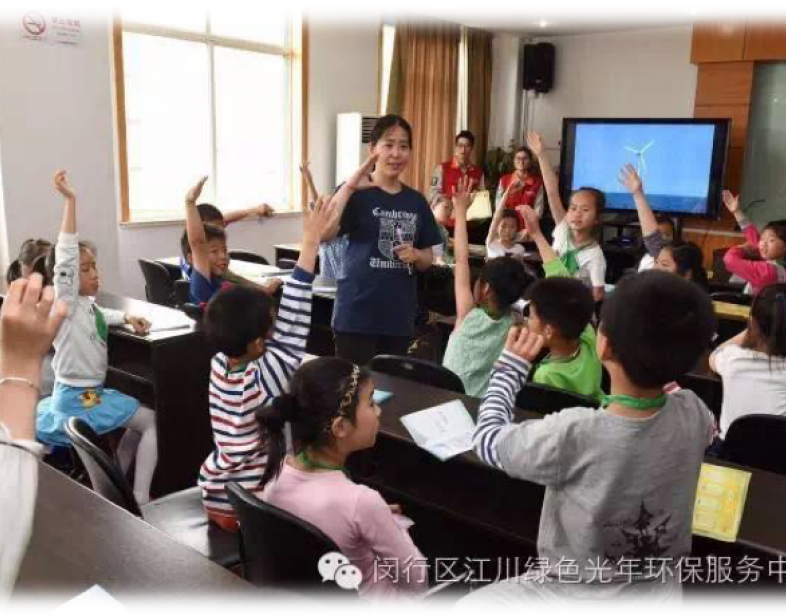An Overview Of Our Solution
Our team try to solve the problem that people don't have enough responsibility and awareness about the environment, and even if they want to follow a green lifestyle, they don't know where and how to begin with in their daily life.
Ms Ni, the founder of our organization, has proposed the Low Carbon Tour and this program will start from her own house which has installed energy-efficient facilities. We cooperate with Shanghai Jiao Tong University, whose green facilities and lab are parts of our tour. Moreover, we invite professional scholars and college students in the related fields to work as guides. And the visitors will not end up with our tour since some of them will be trained and help to run the tour again as a guide. The visitors will find the practical solution and get encouragement from Ms.Ni's home bring the concept of green lifestyle to reality.
- Population Impacted: 12000+ people since August 2014
- Continent: Asia
Last name
Organization type
Context Analysis
In China, environmental sustainability occupies one of the main points of the political agenda, but the situation remains critical. China is No.1 for greenhouse gas emissions, making it a special observed subject in international climate agreements. Moreover, the air quality of some cities is worrying, which prompted the Government to carry out a transition from the coal-dominant energy to green energy like gas and other renewable resources with the lowest cost.
To change the energy supply and the environmental awareness of a country with more than one billion inhabitants is not something that is done from today to tomorrow, and indeed the proportion of businesses is so epochal that individuals end up feeling inconsequential to change.
Huan Ni, the founder has found individuals play a vital role in community and can bring positive change to people's behaviors on environmental conservation and address challenges in Climate Change.
Describe the technical solution you wanted the target audience to adopt
Our team hope to spread the idea of green lifestyle and practical actions we can do to protect environment and address climate change in ordinary communities in China.
Our founder Ni Huan set an example of the solution in communities. Her balcony has been visited by over 8000 people. Some local and national government senior officials have been her visitors. Everyone goes to learn from her, because it is easy to say live sustainable, but she has translated it into practice, with huge investments and efforts that are not available to everyone. She installed photovoltaic panels, and an aquaponics plant, where the water circulates between the tanks with the fish and the pots of the plants: the organic remains of the fishes nourish the plants, which in turn filter the water for the fishes. It inserts five composters, which transform the organic household scrap into fertilizer and introduces new plants — or rather, a veritable potted vegetable garden.
Type of intervention
Describe your behavioral intervention
In order to improve efficiency, our target audience are all those people who care, but just do not know how to translate the interest into daily practice. And then they take part in the Tour which can provide suggestions and inspiration. It is a place of education, and a small school to tell people how to apply sustainability in life. For example, those who have visited Huan Ni's home, a part of the Tour, start following the same green lifestyle in their own family, including classifying garbage, using aquaponics system powered by solar energy and EV car.
Furthermore, visitors are guided by one of the 25 little volunteers, all between nine and 14 years old. We choose young children as guides because we believe children are more influential in transforming awareness on environmental issues, where adults have thought for too long that the issue wasn't important enough or they couldn't do anything about it.
Our solutions are simple, practical and cheap. They are easy to take away by learners. And we are targeting young children to invite them to experience solar BBQ machines for example, and they will talk to their friends and family members. We have received 100+ enquiries from parents who asked for online sale links of composters. 20 families visited my home later installed their solar roofing on their villas. Dozens of families visited my home later bought their own EV cars.
As needed, please explain the type of intervention in more detail
Emotional appeals: We help to build a more friendly and harmonious community through the low carbon tour because it begins from a family (Ms.Ni Huan's Home) in the community. At first the communication among neighbors is rare and and now they are willing to talk about their low-carbon behaviors with others. Some of them also help Ms.Ni Huan to receive visitors when they are not there. They know that it is important to be responsible citizens. Moreover, we show our visitors the cycle of life through the aquaponics system to arouse people's awareness of environment.
Social incentives: The government has realized the importance of sustainable development so they offer some subsidies to individuals and enterprises. Also, we offer some rewards (like certificate and payment) to the visitors showing a positive feedback, such as the children who write a nice report for the low carbo tour. Local government provided funding to do a community center roof farm and invited us to design it and provide resident engagement services to connect them with this roof farm.
Choice architecture: Visitors in the Tour can get diverse suggestions from our professional scholars and guides to encourage them to follow an environmental-friendly lifestyle.
Describe your implementation
1.a specific activity called Low Carbon “Campus + Company” Tour, which is a classic public education product. We will show you a green community, a beautiful campus and a low carbon business compound which are filled with environmental and low carbon surprises.
The Low Carbon Tour:
• Group visitors (weekday): Pick up by a Chartered New Energy Coach Service from downtown
• Individuals or families (weekend): provide new energy cars (3 brands) for trial ride or drive
• Lunch at Shanghai Jiaotong University canteen
• Time frame: 6 hours in total
The Tour:
1. Helen’s home and community(Features:Mainland China first CIGS civil use solar plant; Charging station built at home and the EV car; Vertical organic farm using kitchen waste as compost; Aquaponics system powered by solar energy; Shanghai first charging station parking lot at community level)
2.Eco-house of SJTU (Shanghai JiaoTong University provides supports) (Features:PV and photothermal; Solar Rooftop; Rain water collection; WaterRecycling; WaterPurifying; In-door energy monitoring
system)
3. Green Energy Lab of SJTU (Features: Facial recognition security system; Energy saving exterior walls; Natural lighting; Smart home demonstration lab; Solar roofing integrated with indoor temperature management system; Solar BBQ machines! (Every kid will taste BBQ sweet potatoes and corns!))
4. Canteen of SJTU
5. EV car show
6. 6-hours visit including a lunch
In the tour, we ensure that students can experience sustainable lifestyle by watching, smelling, asking and EATING. Also, there are some professional mentors and guides helping students understand the contents of every part.
At the begining, we have found the problem is how to extend our impact on visitors' behavior, so after the route, we will choose some students and train them as a guide in the next trip.
External connections
Shanghai Jiao Tong University is one of our partner and provides Eco-house and Green Energy Lab as two important part of the Low Carbon Tour, and one of its students union, called Green-Banana Sustainable Campus Initiative, plays an important role in our tour. This organization is a intermediator between the university and us and some students in it work as our guide in the tour. These college students and some professors in universities will take part in the program in the long term and work as an advisor or interns in our organization. Their participation will not only be limited to the tour as they can run other prospective environmental programs.
Furthermore, in order to extend our influence, we are willing to cope with media who are interested in the environmental-friendly lifestyle. For instance, an Italian media called VICE has interviewed Ms.Ni to complete their program "Step Into Your Comfort Zone" since they want to collect the cases that people follow a sustainable life but still can remain comfort.
Who adopted the desired behaviors and to what degree?
Today, visitors to the terrace are guided by one of the 25 little volunteers, all between nine and 14 years old. These "little storytellers" (defined and trained by us) are the visitors who took part in the tour before. We extend their participation and they really do well in guiding new visitors and interpreting the facilities, which saves us human cost. Also, these children give the community a positive feedback since they begin to influence their own family.
How did you impact natural resource use and greenhouse gas emissions?
In order to encourage others to follow the green lifestyle, we show profits we gain. In Helen's home, one part of the low carbon tour, the data tells people they can use CIGS Solar Plant to generate electricity at home.
Conversion efficiency: 14%
Total capacity: 2.4 kw, 150w x 16 panels
Total investment: 24,000 yuan (around 3809 USD)
Estimated power-generation:2200 kwh/year
CO2 reduction: 1.1 ton/year
Product Lifespan: 25 years
3+ months for application, approval and EHS evaluation National and local financial incentives: 0.42 yuan + 0.40 yuan subsidies per kwh generated 0.82 yuan=0.13 USD; 0.13x 2200kwh= 286 USD/yr
Incentive by the State Grid: Purchasing surplus power at 0.45 yuan/kwh without extra cost; earning 45yuan x12=540 yuan/yr sales 85.7 USD/yr
Saved electricity bill: 55yuan x 12=660 yuan/yr about 104 USD/yr; Total direct gain: 475.7 USD/yr; Optimistic estimate yrs of return: 8-10 years
The 1st year: power generated: 1922 kwh
The 1st year: power consumed: 1750 kwh
What were some of the resulting co-benefits?
Mrs. Ni Huan's terrace was visited by about 8000+ people, including some local and national government officials. Everyone goes to learn from her, because it is quick to say live sustainable, but she has translated it into practice, in everyday life, without grandiose investments or efforts that are not available to everyone. Through her terrace, visitors can learn how to bring the concept of environmental-friendly lifestyle to daily life, and then in the facilities in SJTU, visitors can understand the sustainable development and be aroused to take part in this issue. We try to combine the application with education about sustainable development and encourage the continuous participation so that communities can give positive feedback. These behaviors, including garbage classification, the install of energy-efficient facilities and the usage of composts can help to build a green community and decrease the carbon emissions.
Sustainability
The Low Carbon Tour mainly depend on market-based revenue.120 Yuan/person (including lunch, entrance fees, volunteer allowance, explanation)
Return on investment
The first year we operated 9 months (Apr-Dec 2016) and reached 3000 people with a total revenue of around 220k RMB. The second year we operated 12 months and reached nearly 10000 people with a total revenue of around 570k RMB.
How could we successfully replicate this solution elsewhere?
It has not been done before because Ms.Ni is the first one in China who develop a green lifestyle in her own house. The cooperation with educational institution (like Shanghai Jiao Tong University) is necessary because they can share professional guides and facilities with us. Also, we need to train the guides since some of them are college students in related fields or elementary students who have experienced the tour.



